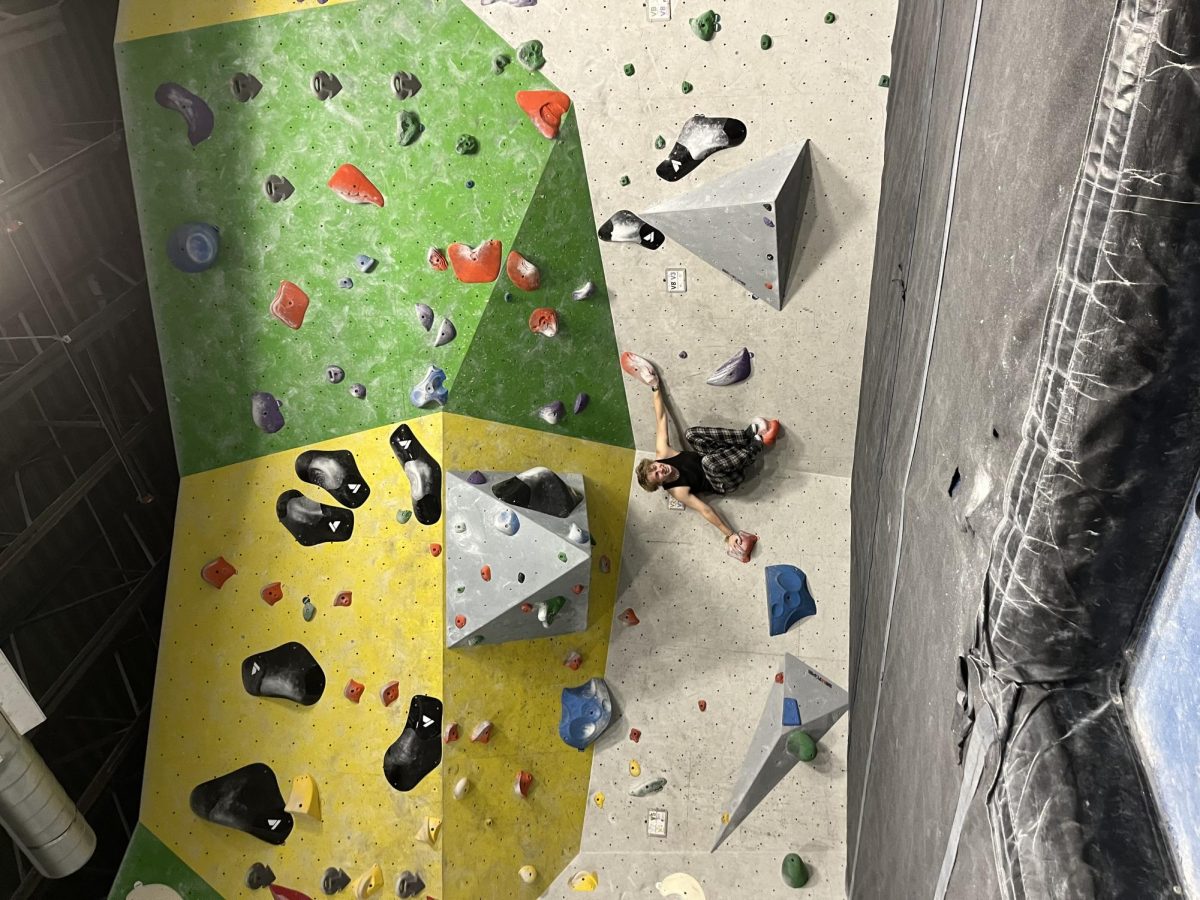Many people find themselves bored over the winter. With the cold air blowing and the snow falling, most people are stuck indoors for the season, but being indoors doesn’t have to stop you from having fun and being active, so try rock climbing!
Rock climbing is an indoor and outdoor activity, making it an all-year sport. Lots of people visit indoor climbing gyms, but some like to take it a few steps further and climb out in the wild.
Rock climbing could be a great alternative for those who have been interested in working out but dislike the gym. Rock climbing mainly stresses your back and forearms but provides a full-body workout, engaging muscles from head to toe. Rock climbing regularly can help improve overall muscular strength, endurance, and flexibility. It’s great for breaking a sweat and giving yourself a real challenge while still in an enjoyable environment.
Another reason rock climbing could be a great alternative or addition to traditional weight lifting is the mental aspect of the activity. Traditional weightlifting is difficult and requires one to be strongly disciplined, but it doesn’t require much critical thinking or planning that climbing does; this is one of the key differences between the two activities. To reach the top of their course, climbers must navigate through various routes in real-time and are constantly challenged to find the most efficient and effective ways to reach the top. This extra challenge generates a feeling of accomplishment that traditional lifting cannot attain.
Climbing is for everybody! Climbing gyms have grades on all the different routes offered to their members so that you can practice and enjoy climbing no matter how skillful you are. Generally, grades are decided by the climbers, who will test out a new route and then vote on what level of difficulty they should be graded as. The grades start at VB for indoors, then go to VO and continue in ascending numerical order. It should be kept in mind that indoor and outdoor climbs have different rating systems and do not translate.
Most outdoor climbers are generally skilled and more experienced than the average indoor climber. Outdoor climbing is considered more difficult than indoor climbing for a few reasons, the first being that the holds are all natural and will often be harder to get a grip on compared to generic indoor holds. Another reason that outdoor climbing is considered more difficult is because of the danger it presents. Most outdoor climbers need to bring crash pads, have spotters, and wear safety equipment to feel completely secure. Despite these challenges, outdoor climbing is recommended to anybody who feels fairly confident, as it offers a new way to explore and connect with nature.
2023 SHS graduate Noah Carmody is an avid indoor and outdoor boulderer. He enjoys rock climbing as a physical and mental workout, stating, “I like rock climbing because it’s a full-body workout that also challenges your brain to work through solving puzzles with your body.”
Personal projects keep climbers coming back to the gym. Many climbers, such as Carmody, choose a difficult climb and take time to map it out, develop specific techniques, and build the strength to complete the climb. Projects can take days, weeks, or months, depending on their difficulty. When asked about his projects, Carmody responded, “When I approach a new climb, the first thing I do is look at the climb as a whole to get an idea of how to get from start to finish, then I like to visually imagine how I’ll get across certain areas of the climb.”
According to Carmody, the technicalities of climbing are nuanced: “I think about if I should climb more to the right to get started on the left side because sometimes you have to adjust your weight right and regain balance in order to start traversing in the other direction. The same logic can be applied to any type of problem-solving, which is what makes rock climbing so cool.”
Carmody noted that climbers work on “approaching things in different ways” and use different skills to solve problems, commenting, “You open your mind up to new possibilities and challenges.” He also recommends rock climbing to anybody even slightly interested, saying, “Give it a shot. There are a bunch of different ways to try it both indoors and outdoors–you can try it assisted with ropes, or you can free climb with pads. You can do it for endurance training or strength training, and it really helps with mental fortitude as well.”
